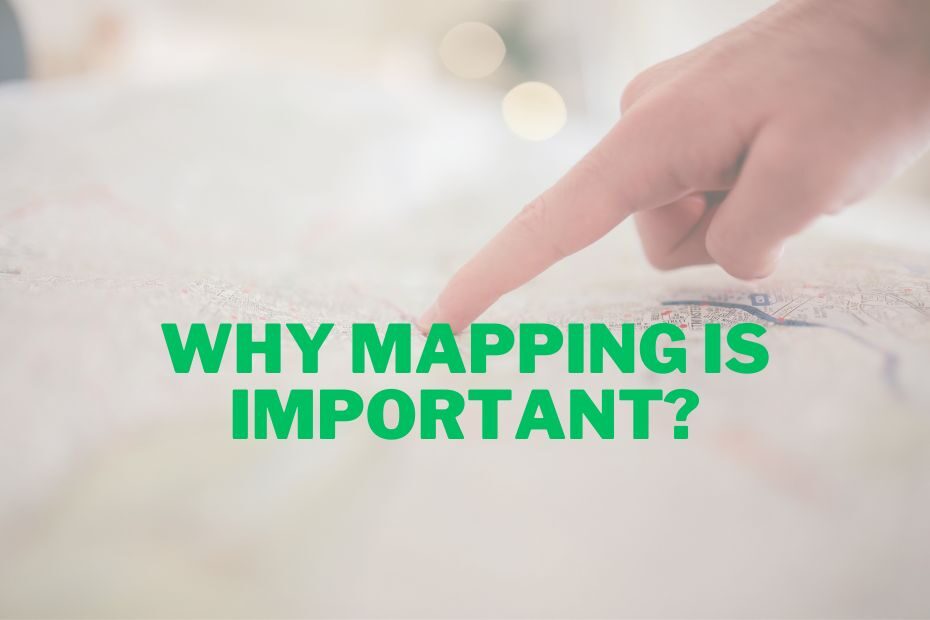Mapping is the process of creating a visual representation of data or information. It involves using various tools and techniques to convert complex information into easy-to-understand visual representations such as maps, charts, and graphs. Mapping has become an essential tool for individuals and businesses alike due to its numerous benefits. In this article, we will explore why mapping is important and the benefits it can offer to individuals and businesses.
What is Mapping?
Mapping is the process of creating a visual representation of data or information. It can be done using various tools and techniques, including mapping software, GIS (geographic information systems), and other visualization tools.
Mapping is a powerful tool for converting complex information into an easy-to-understand visual format. It can be used for various purposes, including data analysis, decision-making, and communication.
READ MORE: What Is GIS Mapping?
Why Mapping Is Important (The Importance of Mapping)
In today’s fast-paced and data-driven world, mapping has become more important than ever before. Whether you are a student, a researcher, an entrepreneur, or simply someone who wants to make better-informed decisions, mapping can help you achieve your goals. So, let’s dive into the world of mapping and discover its many applications and benefits.
1. Better Decision-Making
Mapping can help organizations and individuals make better decisions. By visualizing information, it becomes easier to identify patterns, trends, and relationships that might not be immediately obvious from raw data. Mapping can help decision-makers understand the bigger picture and make more informed choices.
2. Improved Communication
Mapping is a powerful communication tool. It allows complex information to be conveyed in a simple and understandable way. Mapping can help individuals and organizations communicate their ideas and data to others more effectively, whether it’s through presentations, reports, or other forms of communication.
3. Enhanced Analysis
Mapping can help individuals and organizations analyze data more effectively. By visualizing data, it becomes easier to identify outliers, patterns, and relationships that might not be apparent from raw data. Mapping can help users identify areas of interest, clusters, or hotspots, allowing them to make more informed decisions.
4. Efficient Planning
Mapping can help organizations and individuals plan more efficiently. By visualizing data, it becomes easier to identify areas of concern, such as congestion, low utilization rates, or other issues that might affect planning. Mapping can help planners optimize resources, allocate funds, and prioritize projects to achieve better outcomes.
5. Improved Safety
Mapping can help improve safety in various industries. For example, in the transportation industry, mapping can help identify accident-prone areas, roadblocks, and other safety concerns. In the construction industry, mapping can help identify potential hazards, such as unstable ground, utility lines, or other obstacles.
6. Understanding Complex Data
Mapping allows us to understand complex data in a visual format. Whether we are analyzing demographic data, tracking disease outbreaks, or studying weather patterns, mapping can help us identify patterns and trends that might not be immediately obvious in a spreadsheet or a table.
This can be particularly useful for researchers, policymakers, and other decision-makers who need to make informed choices based on complex data.
7. Optimizing Logistics
Mapping is also an essential tool for optimizing logistics. Whether we are managing a supply chain, coordinating transportation networks, or planning a delivery route, mapping can help us identify the most efficient and cost-effective solutions.
For example, if we are managing a supply chain, we can use maps to identify potential bottlenecks, optimize transportation routes, and track inventory levels. By using maps to optimize logistics, we can reduce costs, improve efficiency, and increase customer satisfaction.
8. Enhancing Customer Experience
Finally, mapping can help us enhance customer experience by providing easy-to-understand information about our products and services. Whether we are providing directions to our store, showcasing our products in an online store, or providing information about our services, maps can help us communicate information in a clear and concise way.
Conclusion:
In summary, mapping is an incredibly important tool in many fields, including geography, urban planning, public health, and many others. By providing a visual representation of spatial relationships, maps can help us communicate complex information, identify patterns and trends, make informed decisions, and better understand the world around us.
Additionally, mapping has also become increasingly important in the digital age. With the advent of Geographic Information Systems (GIS) and other mapping technologies, we are now able to create highly detailed and interactive maps that provide a wealth of information in real-time.
FAQs: Why Mapping Is Important?
What tools can be used for mapping?
There are various tools and techniques available for mapping, including mapping software, GIS (geographic information systems), and other visualization tools.
How can mapping help businesses improve their marketing strategies?
Mapping can help businesses identify patterns and trends in customer data, which can be used to develop more effective marketing campaigns and target specific customer segments.
How can mapping improve customer experience?
Mapping can provide customers with easy-to-understand information, such as store locations, product features, and pricing information, which can enhance their overall experience with the business.
